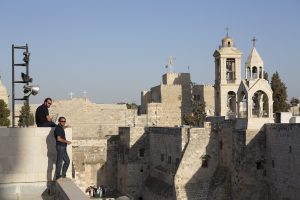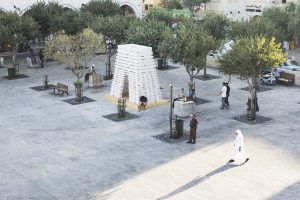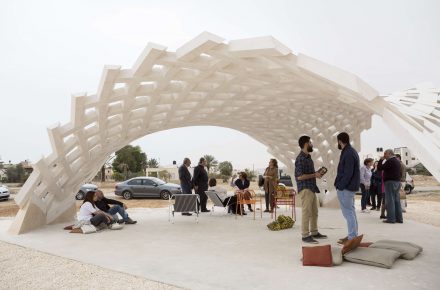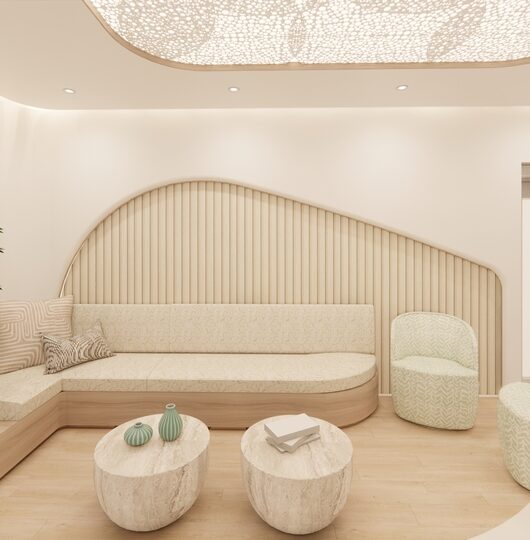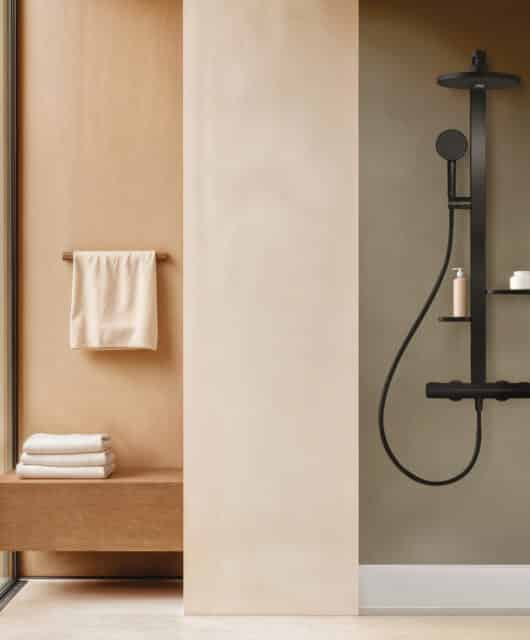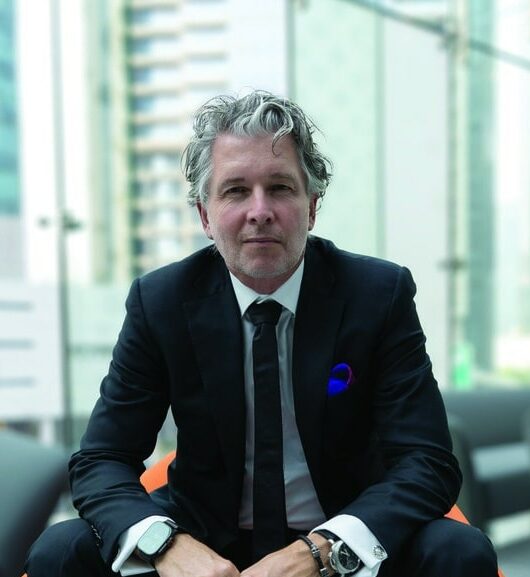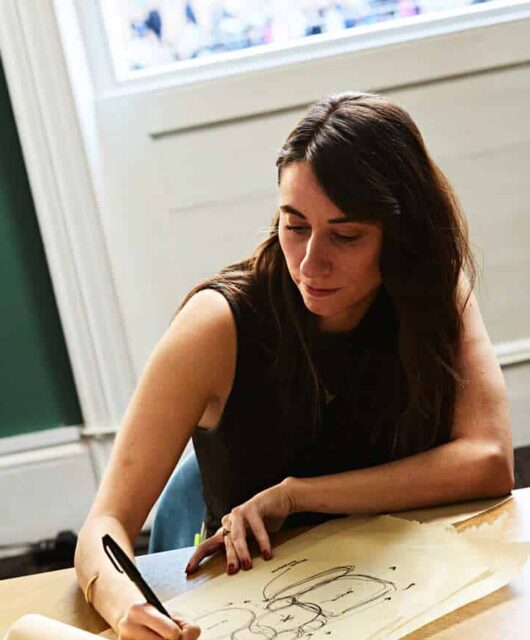The Bethlehem-based architect studio on contemporary design in Palestine – By Rima Alsammarae
“It’s a family-run business,” says Yousef Anastas, one of two brothers currently running the Bethlehem and Paris-based architecture and design studio AAU Anastas. “Our parents, who are both architects, started it back in 1979, but gradually, in the past 10 years, we’ve been taking over. While the founders George and Pauline are still involved in the studio, along with an uncle Jalal who, aside from being an architect, manages the construction operations, Yousef and his brother Elias have been steadily growing AAU Anastas. In the past 10 years, they’ve expanded the firm with two more divisions and opened a branch in Paris.
“The whole family works under the same structure,” says Elias. “But Yousef and I push the research and some of the architectural projects, like the upcoming Hebron Courthouse. Essentially, AAU Anastas’ two entities – Local Industries and Scales – are my and Yousef’s own projects.”
Comprising three departments, AAU Anastas mainly serves architectural solutions throughout Palestine, but Local Industries, its industrial design production arm, and Scales, the research driven unit, allow the team to not only nourish various interests, but also provide complete design plans. The studio also participates in international competitions, which are done through its Paris branch, where its consultants are based and its engineering office is located.

Courthouse, Daar Jericho and the Edward Said National Conservatory of Music in Bethlehem. It has also experimented with design installations, like the BIC Structure (which was exhibited at an architectural symposium in Amsterdam) and the Palestine pavilion at this year’s Dubai Design Week. Its ongoing exploration of stone for architectural application, too, will form the foundation of multiple upcoming projects, such as the El Atlal Residency and an extension of a Jerusalem-based shop.
Although the studio’s projects span multiple disciplines and require various creative processes a unifying link is the team’s support of local communities – old and new. Every project is coated in AAU Anastas’ support of Palestine, from using regionally sourced materials to collaborating with local artisans that apply generations-old knowhow. Contemporary yet rooted in heritage, the team’s projects are often about creating an optimistic presence that works within existing urban fabric, from Jericho to Bethlehem.
“Today, there’s a whole debate about sustainability and the certificates you get for having a passable energy efficient building, but we think that the sustainability of a project starts with the process of design, and there are many ways of making a project sustainable other than having triple glazing or a super-performing conditioning system,” says Elias. “The bottom-up process that we use is where the understanding of the fabrication and construction capacities are taken into account in the process of design, creating an object that is coherent with the means available. It’s a hyper-local approach to responding to more global problems.”
One example of AAU Anastas’ approach is Scales’ two-year long research endeavour into the use of stone. According to Elias, Palestine’s stone industry is world classified, but the expertise that was prevalent at the start of the last century has slowly diminished over time. “It’s a local issue,” he says. “And the global issue is that stone construction in the world has, I think, very few or no regulations. If you want to build a stone structure anywhere, you won’t have a clear regulation for dimensioning the elements. It’s just not a material that’s integrated in the process of construction.” Working in collaboration with El Atlal, a Jericho-based artist residency initiative, AAU Anastas will soon deliver an institution that furthers dialogue among artists in the city. The building, of course, will be made of natural stone.
Not all projects by AAU Anastas are closely linked to Palestinian culture. The BIC Structure, made in 2015, was a research project inspired by the commonly used pen and presented it as a symbol of engineering in the 1950s. Consisting of 10,000 BIC pens, the structure measured at nearly four metres in height. “The idea wasn’t specifically the pen, but using an object in a way that wasn’t intended,” says Elias.
More often than not though, AAU Anastas uses its creative output as a platform to support Palestinian culture and heritage, which can lead to working with olive tree wood or restoring old ruins. The studio’s creative decisions seem, more or less, intentional and strategic – except for the launch of Local Industries, which was an opportunity spurred out of necessity.
“We started it about five years ago,” says Yousef. “And, at that moment, we were designing a music conservatory in Bethlehem. Sometime toward the end of the project, the client had a financial crisis and lacked funds for the specified furnishing. So the challenge was to work with local artisans that participated in the construction of the building to generate a whole collection of furniture to accommodate the different spaces, all while staying within the available budget.”

At the moment, the studio has a full plate. Local Industries will be exhibiting five pieces at the Khalil Sakakini Cultural Center in Ramallah, AAU Anastas has a shop-extension to complete in Jerusalem and construction on the courthouse in Hebron begins in two-months time. What’s of utmost importance, though? “We have a few meetings with craftsmen that we’ll be getting to, and with the stone quarries,” says Elias, before Yousef chimes in, “and with stonecutters.”



